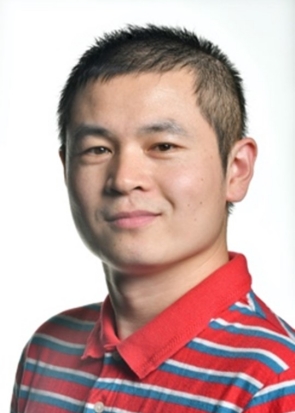
Plant organellar homeostasis and interaction
National Key Laboratory of Plant Molecular Genetics
Peiqiang Feng
Personal Profile
2004/09-2008/07, Shandong Agricultural University, Bachelor
2008/09-2016/01, Institute of Botany, CAS, Ph.D
2016/07-2022/08, Department of Cell biology, Harvard Medical School/HHMI, Postdoctoral Fellow
2022/08-2023/06, Department of Cell biology, Harvard Medical School/HHMI, Research Associate
2023/06-Present, CAS Center for Excellence in Molecular Plant Sciences, Principle Investigator
Research Work
Photosynthesis provides the carbon source and energy for almost all living organisms on Earth. It also maintains the level of oxygen and carbon dioxide in the atmosphere and therefore is key to supporting the Earth's ecosystem. Chloroplasts, which only exist in photoautotrophic organisms (including algae and green plants), are not only the main site where photosynthesis takes place, but are also responsible for many important metabolic reactions of plants. The peroxisome is the central hub of cellular metabolism. It is essential for the oxidation of fatty acids and quenching of reactive oxygen species, thus protecting plants from oxidative stress damage. In addition, the crosstalk between peroxisomes and chloroplasts in some metabolic pathways, such as photorespiration and lipid synthesis, are crucial for the regulation of photosynthesis and plant development.
Our group has long-term interests in the molecular mechanisms that regulate organellar homeostasis and crosstalk, primarily focusing on peroxisomes and chloroplasts in plants. Using Arabidopsis thaliana and rice as the main model system, we are working on the following scientific questions by a combination of multidisciplinary approaches:
1. Mechanism of peroxisomal matrix protein import;
2. How peroxisomal membrane proteins are inserted and degraded;
3. The mechanisms by which plant cells regulate peroxisome number;
4. How chloroplasts interact with peroxisomes during the photorespiratory pathway, and developing molecular strategies to improve photosynthetic efficiency in crops;
Main Achievements
Publications
1. Feng, P#., Wu, X., Erramilli, S.K., Paulo, J.A., Knejski, P., Gygi, S.P., Kossiakoff, A.A. and Rapoport, T.A#., 2022. A peroxisomal ubiquitin ligase complex forms a retrotranslocation channel. Nature, 607(7918), pp.374-380. (# co-corresponding author)
2. Feng, P#., Skowyra, M.L. and Rapoport, T.A#., 2022. Structure and function of the peroxisomal ubiquitin ligase complex. Biochemical Society Transactions, 50(6), pp.1921-1930. (# co-corresponding author)
3. Feng, P., Guo, H., Chi, W., Chai, X., Sun, X., Xu, X., Ma, J., Rochaix, J.D., Leister, D., Wang, H., Lu, C. and Zhang, L., 2016. Chloroplast retrograde signal regulates flowering. Proceedings of the National Academy of Sciences, 113(38), pp.10708-10713.
4. Skowyra, M.L., Feng, P. and Rapoport, T.A., 2023. Towards solving the mystery of peroxisomal matrix protein import. Trends in Cell Biology. pp.S0962-8924.
5. Gao, Y., Skowyra, M.L., Feng, P. and Rapoport, T.A., 2022. Protein import into peroxisomes occurs through a nuclear pore–like phase. Science, 378(6625), p.eadf3971.
6. Ouyang, M., Li, X., Zhang, J., Feng, P., Pu, H., Kong, L., Bai, Z., Rong, L., Xu, X., Chi, W., Wang, Q. and Zhang, L., 2020. Liquid-liquid phase transition drives intra-chloroplast cargo sorting. Cell, 180(6), pp.1144-1159.
7. Guo, H., Feng, P., Chi, W., Sun, X., Xu, X., Li, Y., Ren, D., Lu, C., David Rochaix, J., Leister, D. and Zhang, L., 2016. Plastid-nucleus communication involves calcium-modulated MAPK signalling. Nature Communications, 7(1), p.12173.
8. Chi, W., Li, J., He, B., Chai, X., Xu, X., Sun, X., Jiang, J., Feng, P., Zuo, J., Lin, R., Rochaix, J.D. and Zhang, L., 2016. DEG9, a serine protease, modulates cytokinin and light signaling by regulating the level of ARABIDOPSIS RESPONSE REGULATOR 4. Proceedings of the National Academy of Sciences, 113(25), pp.E3568-E3576.
9. Xu, X., Chi, W., Sun, X., Feng, P., Guo, H., Li, J., Lin, R., Lu, C., Wang, H., Leister, D. and Zhang, L., 2016. Convergence of light and chloroplast signals for de-etiolation through ABI4–HY5 and COP1. Nature Plants, 2(6), pp.1-7.
10. Chi, W., Feng, P., Ma, J. and Zhang, L., 2015. Metabolites and chloroplast retrograde signaling. Current Opinion in Plant Biology, 25, pp.32-38.
11. Sun, X., Feng, P., Xu, X., Guo, H., Ma, J., Chi, W., Lin, R., Lu, C. and Zhang, L., 2011. A chloroplast envelope-bound PHD transcription factor mediates chloroplast signals to the nucleus. Nature communications, 2(1), p.477.